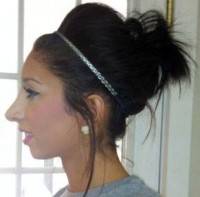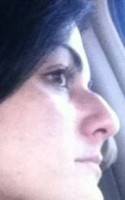Dorsal hump reduction without surgery
It is possible that if you only have a very small bump, the procedure could be done just by filing down the bridge. This keeps the procedure simple and recovery would be quicker.
Usually when the bridge is reduced the nasal bones need to be broken and narrowed to avoid a wide bridge, especially if the bump is a large one.
If you trust your surgeon’s expertise, go with his or her recommendation. (Ronald J. Edelson, MD, San Diego Plastic Surgeon)
Reducing a dorsal hump
I have many patients that have been treated with closed rhinoplasty with dorsal hump reduction. In cases where the hump is small, then it is very possible that your surgeon might not need to perform osteotomies to break the nasal bones.
I have seen this be successful many times, but you should be sure your plastic surgeon has plenty of experience with these techniques. Many younger surgeons never received training to perform closed rhinoplasties. (Steven L. Ringler, MD, FACS, Grand Rapids Plastic Surgeon)
Dorsal hump and closed rhinoplasty.
A minor dorsal hump can usually be reduced with a closed rhinoplasty approach. However, there is no guarantee that your bones would not have to be brought in with an “osteotomy.”
If you think of a hump as the top of a mountain, then imagine the cap of the mountain taken off.
You are now left with a wider looking mountain. In this situation to avoid a wide looking dorsum or nasal bridge then the bones will have to be brought in. It all depends on the architecture of your nasal bones and how much of your hump is cartilage. Here is a video of a classic dorsal hump removal that was large and required the bones to also be narrowed to provide for smooth bridge shape and highlights and shadows. (Ashkan Ghavami, MD, Beverly Hills Plastic Surgeon)
Open or closed does not matter so much for this. However, if it is open, the surgeon can see the osteotomies (the cuts in the bone) and make sure the edges are smooth. Also, make sure that all you want is a hump reduction.
Ask the surgeon to morph the images, and make sure that is all you need. Once you see the morphed image, you might realize that perhaps the tip of your nose over or under projects. Just double check. (Stuart H. Bentkover, MD, Boston Facial Plastic Surgeon)
A dorsal hump can be composed of bone and cartilage, and the hump can be satisfactoril
Smoothed out through a closed, reduction rhinoplasty. In this procedure, an incision is made on the inside of the nose and the surgeon gains exposure to the hump without going through the outer skin. The hump is then removed, and “rasped” or sanded down to a smooth contour. In some patients, the operation is essentially over at this point, but others can be left with a widened or open roof of the nose under the area where the hump had formerly been.
In this case, the bone needs to be re-positioned to “close” the roof and get a smooth, even shape along the length of the dorsum. This is accomplished by the technique of osteotomy which breaks and moves the bones to improve the contour. Fortunately, the bones of the nose heal very rapidly, and the splint placed on the nose cn be removed safely within a week of the surgery. Even an experienced surgeon may not be sure in advance if an osteotomy will be needed, and you should discuss contingencies and possibilities with your surgeon before your operation. (Michael H. Rosenberg, MD, White Plains Plastic Surgeon)
Small nose hump: less is more!
A small bump on the nose can be smoothed and straightened by filing or shaving it down through small hidden incisions.
By itself, this is a quick and straight forward procedure to perform (in experienced hands!) and requires just a few days to a week of recovery time and is not uncomfortable for you.
For medium and larger sized bumps, the bones of the nose may need to be broken and then narrowed, and some cartilage may need to be surgically placed to keep the airway passages open – this is a bigger procedure with more down time.
Remember: seek a board certified plastic surgeon to do your operation! (Ariel N. Rad, MD, PhD, Baltimore Plastic Surgeon)


